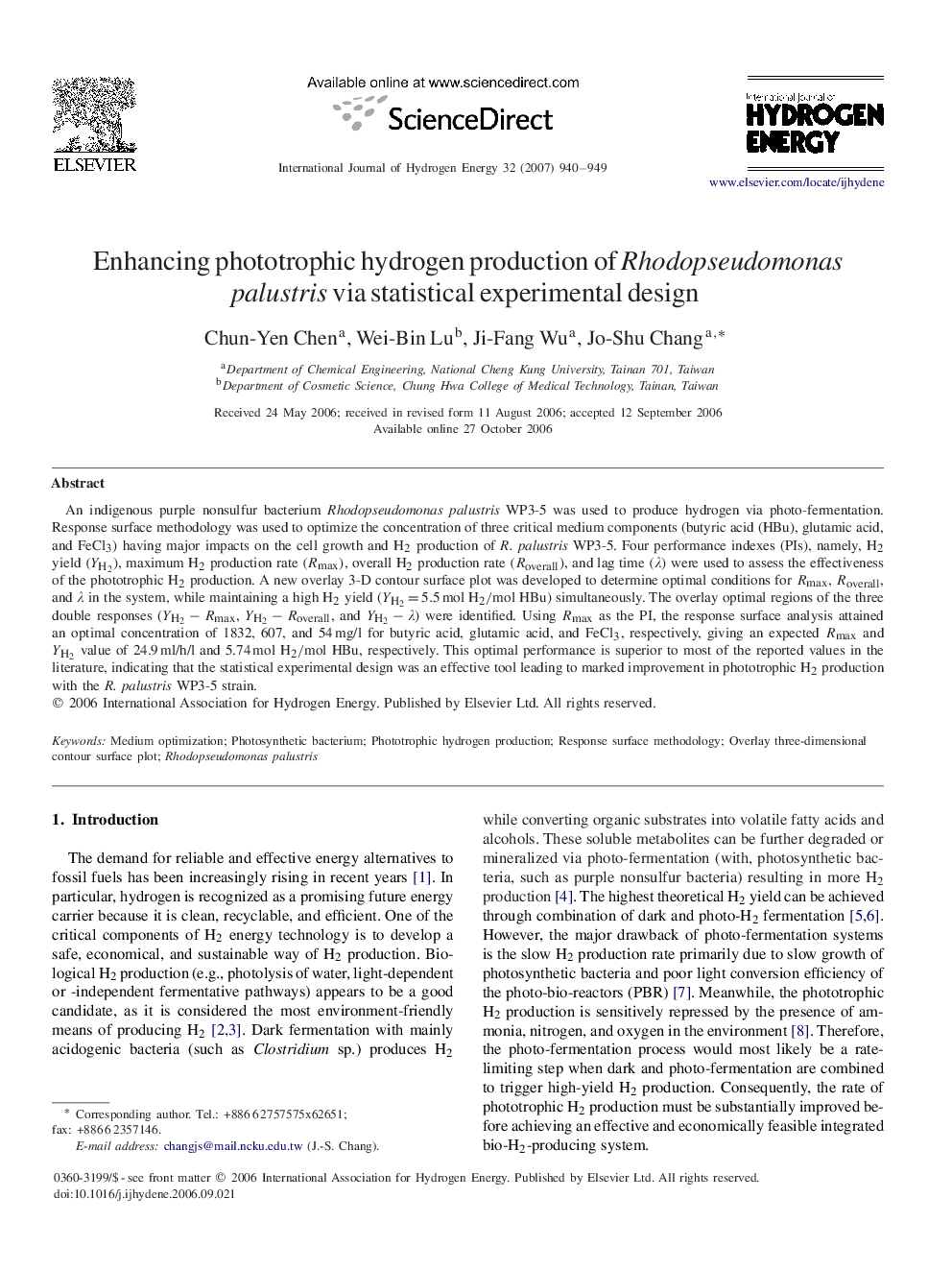| Article ID | Journal | Published Year | Pages | File Type |
|---|---|---|---|---|
| 1280642 | International Journal of Hydrogen Energy | 2007 | 10 Pages |
An indigenous purple nonsulfur bacterium Rhodopseudomonas palustris WP3-5 was used to produce hydrogen via photo-fermentation. Response surface methodology was used to optimize the concentration of three critical medium components (butyric acid (HBu), glutamic acid, and FeCl3FeCl3) having major impacts on the cell growth and H2H2 production of R. palustris WP3-5. Four performance indexes (PIs), namely, H2H2 yield (YH2(YH2), maximum H2H2 production rate (Rmax)(Rmax), overall H2H2 production rate (Roverall)(Roverall), and lag time (λ)(λ) were used to assess the effectiveness of the phototrophic H2H2 production. A new overlay 3-D contour surface plot was developed to determine optimal conditions for RmaxRmax, RoverallRoverall, and λλ in the system, while maintaining a high H2H2 yield (YH2=5.5molH2/molH2/mol HBu) simultaneously. The overlay optimal regions of the three double responses (YH2-RmaxYH2-Rmax, YH2-RoverallYH2-Roverall, and YH2-λYH2-λ) were identified. Using RmaxRmax as the PI, the response surface analysis attained an optimal concentration of 1832, 607, and 54 mg/l for butyric acid, glutamic acid, and FeCl3FeCl3, respectively, giving an expected RmaxRmax and YH2YH2 value of 24.9 ml/h/l and 5.74 mol H2/molH2/mol HBu, respectively. This optimal performance is superior to most of the reported values in the literature, indicating that the statistical experimental design was an effective tool leading to marked improvement in phototrophic H2H2 production with the R. palustris WP3-5 strain.
